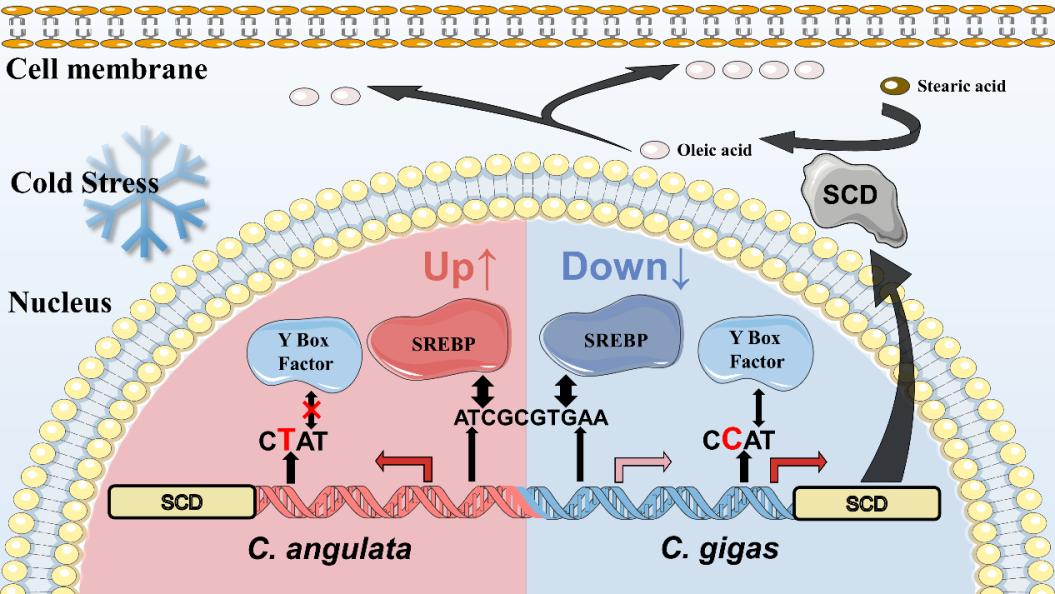
Phenotypic plasticity is essential for responding rapidly to environmental variations. However, the genetic and evolutionary mechanism underlying plasticity in the marine organism remains poorly understood.
Recently, a research team led by Prof. LI Li from the Institute of Oceanology of the Chinese Academy of Sciences (IOCAS) has confirmed that the cis- and trans-variations shape the diverged pattern of phenotypic plasticity in stearoyl-CoA desaturase (Scd) gene and its metabolic product oleic acid (C18:1) in two congeneric oysters. The divergent pattern regulates the fluidity of cell membranes for temperature adaptation.
The study was published in Molecular Biology and Evolution on Jan. 20.
Common garden culture and indoor temperature stress experiments showed a diverged temperature responding pattern in Scd gene expression and downstream metabolic product C18:1.
Crassostrea gigas (C. gigas, relative low temperature adapted specie) showed higher constitutive expression and content, and Crassostrea angulata (C. angulata, relative high temperature adapted specie) showed higher upregulated magnitude. This is trade-offs between constitutive expression and plastic expression, which may be mediated by genetic assimilation, one of the important evolutionary modes of plasticity.
Genetic screening and functional experiments demonstrated that 16 single nucleotide polymorphisms (SNPs), located in the promoter regions of Scd, showed different frequencies and formed a strong linkage disequilibrium block (LD Block).
Among these SNPs, one interacted with the positive transcriptional factor Y Box Factor, and the different allele of the causative SNP could create/destroy the cis-regulatory motif, which mediated higher constitutive expression of Scd in C. gigas. And the different expression pattern (down-regulated in C. gigas and up-regulated in C. angulata) in positive trans-factor Sterol-regulatory element binding proteins (Srebp) under low temperature stress might mediate the higher upregulated magnitude of Scd in C. angulata.
"Our study reveals that cis- and trans-variations shape the divergence of phenotypic plasticity. It provides new insights into the evolution of plasticity in marine organism as well as its important role in the formation of adaptive traits and the prediction of the adaptation potential of marine organisms under global climate change," said WANG Chaogang, first author of the study.
"Based on this study, our team is carrying out genetic improvement and designed breeding in C. gigas and C. angulata," said Prof. LI.

Schematic representation of Scd plastic expression pattern in C. gigas and C. angulata shaped by cis- and trans-variations. (Image by IOCAS)

86-10-68597521 (day)
86-10-68597289 (night)

52 Sanlihe Rd., Xicheng District,
Beijing, China (100864)

